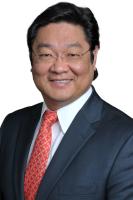Ear Surgery
Overview
 Corrective ear surgery, or otoplasty, can reduce the appearance of prominent ears and correct other congenital ear abnormalities. Ears are like fingerprints – no two are the same. So, this surgery is highly customized to the needs and goals of each patient.
Corrective ear surgery, or otoplasty, can reduce the appearance of prominent ears and correct other congenital ear abnormalities. Ears are like fingerprints – no two are the same. So, this surgery is highly customized to the needs and goals of each patient.
Many patients feel that they have ears that are too prominent or that stick out. Other ear abnormalities include a bowl of the ear that is too large, a lobe that is too long, or a misshapen helical rim.
When we evaluate patients, we do a thorough analysis of the ears to determine exactly where the problem lies. The goal is normal-looking ears, so we plan the surgery based on what is required to reach that goal. In some cases, we reshape the ear entirely, although this is rare. Most patients require pinning of ears that protrude, some removal of cartilage, or some reshaping of a portion of the ears. Therefore, otoplasty can involve decreasing the size of the ears, reshaping the ears, and/or configuring them closer to the head so that they no longer stick out.
Some patients may require ear reshaping of both ears, while others have an abnormality in only one ear. The abnormalities may be a result of genetics or injury.
Obviously, the skill and experience of your surgeon is paramount to achieving an excellent result from otoplasty. Depending on your goals and our evaluation of your ears, we can correct:
- Large ears
- Protruding ears
- Ears that fold down or inward (lop ear)
- Large, stretched, or torn earlobes
- Misshapen ears
- Ears with a missing anti-helix
- Ears that do not match or are asymmetrical
“I had ear surgery (otoplasty) with Dr. Momeni, and he did a great job. I am extremely happy with the results. Thank you, Dr. Momeni. I highly recommend Dr. Momeni to anyone out there who wants to feel and look great.”
Ready to get started?
Ear Surgery Procedure
“Dr. Momeni was great. He is very friendly and made me feel comfortable. The day of my surgery, he asked me what kind of music I wanted to hear, and he performed surgery with music in the background, which was great because I was a little nervous. But he wanted me to feel relaxed. He is great at what he does.”








